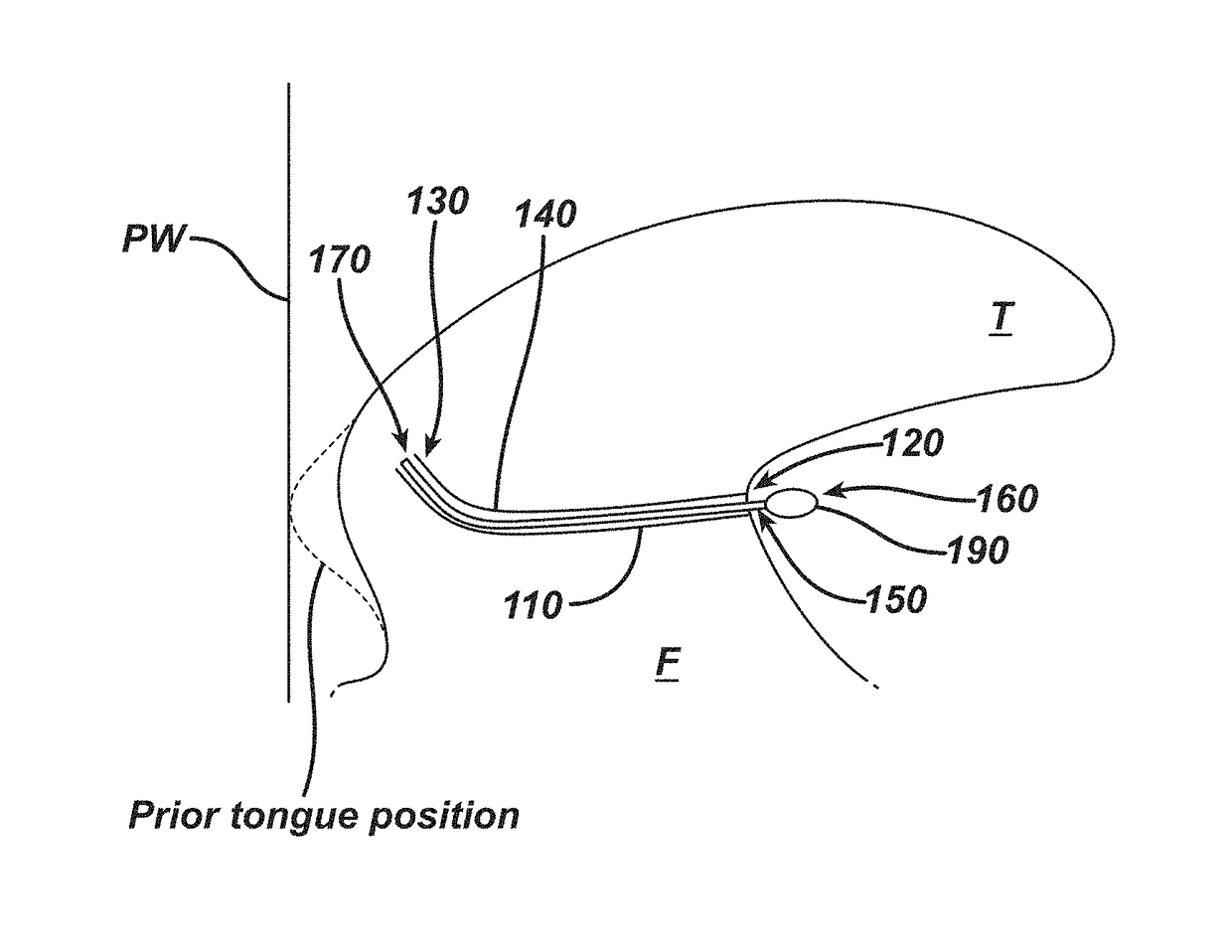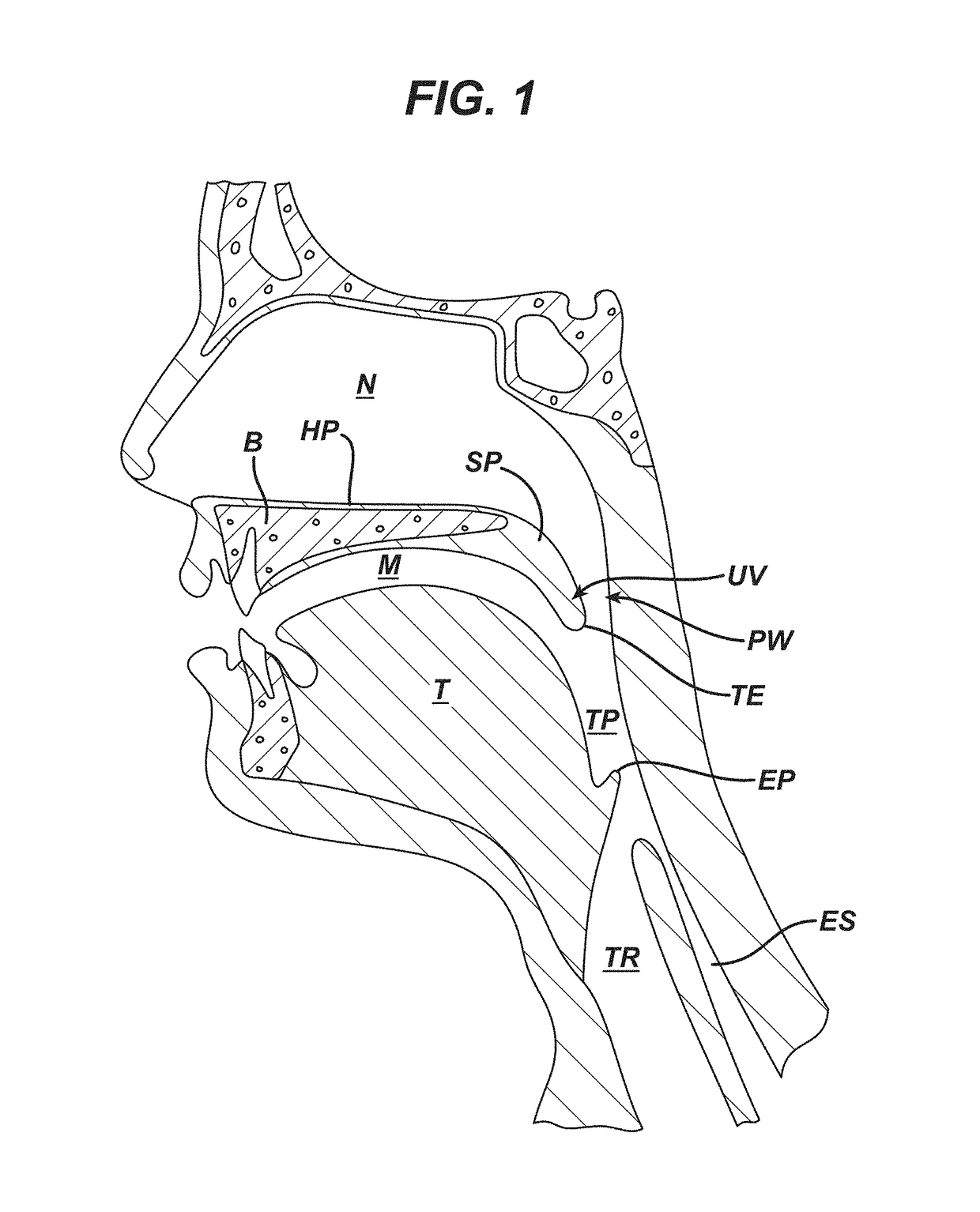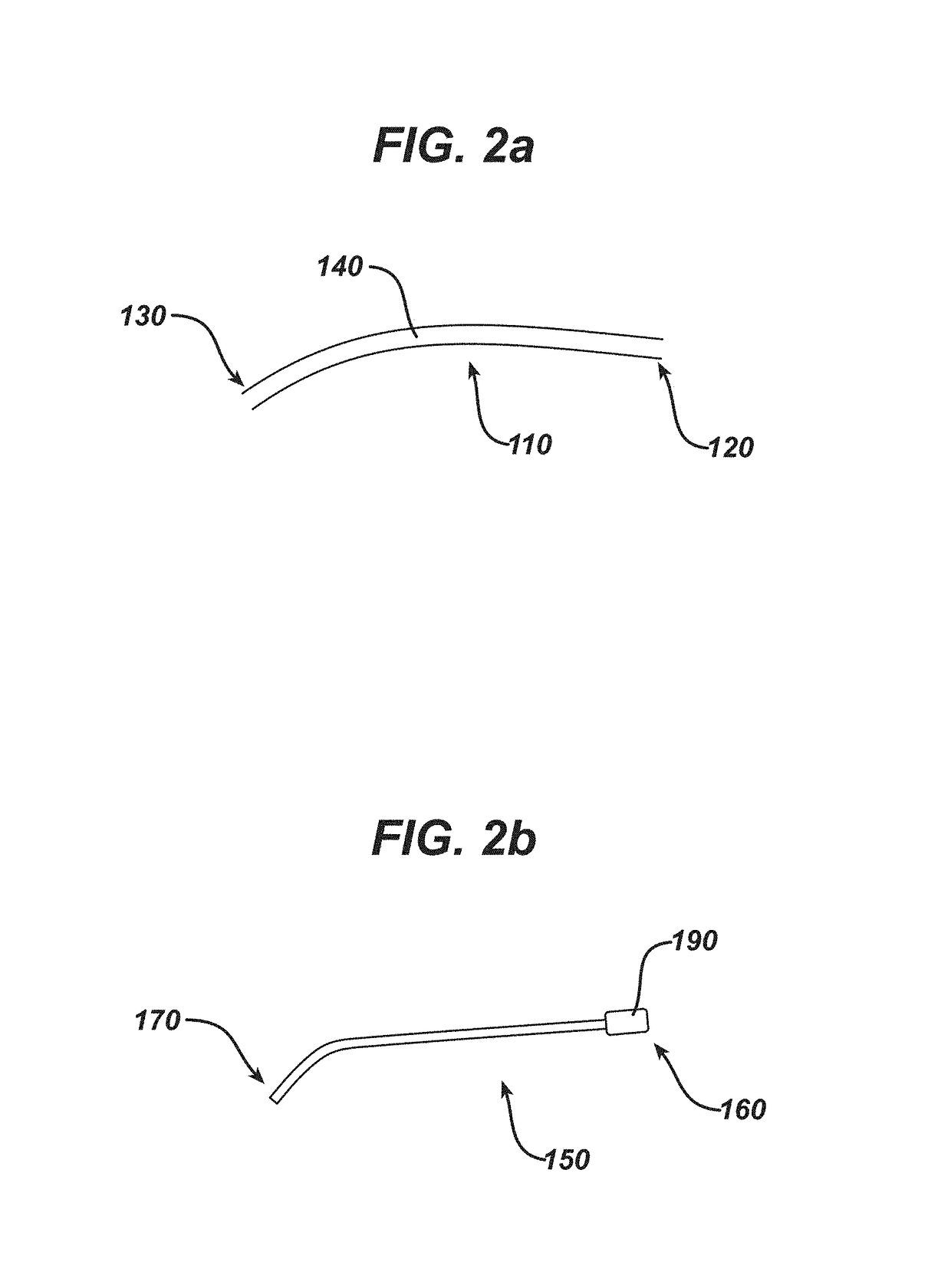Method and device for treating obstructive sleep apnea
a technology for obstructing sleep and patients, applied in the field of treating sleep disorders, can solve the problems of waking somnolence, reducing neurocognitive performance, and disrupting sleep
- Summary
- Abstract
- Description
- Claims
- Application Information
AI Technical Summary
Benefits of technology
Problems solved by technology
Method used
Image
Examples
Embodiment Construction
[0058]Disclosed herein is a device and method for treating Obstructive Sleep Apnea (OSA). As depicted in FIG. 2a, the device 100 is comprised of an insert member 110 having a proximal end 120 and a distal end 130 and a lumen 140 there between. A shaping member 150 having a proximal end 160 and a distal end 170 is shown in FIG. 2b wherein the 140 lumen is adapted to receive at least a portion of the shaping member 150. The shaping member 150 shown in FIG. 2b depicts an optional grip 190 at the proximal end 160. The distal end 170 can also have an optional grip 190, although not shown in FIG. 2b. The insert member 110 and the shaping member 150 work together to change or control the shape of a patient's tongue during sleep. In one embodiment, the insert member 110 has a lumen 140 that is collapsible, i.e., the lumen 140 is collapsed by the surrounding tongue tissue when the insert member 110 is placed within the tongue. FIG. 2c illustrates a cross-section of an insert member 110 depic...
PUM
 Login to View More
Login to View More Abstract
Description
Claims
Application Information
 Login to View More
Login to View More - R&D
- Intellectual Property
- Life Sciences
- Materials
- Tech Scout
- Unparalleled Data Quality
- Higher Quality Content
- 60% Fewer Hallucinations
Browse by: Latest US Patents, China's latest patents, Technical Efficacy Thesaurus, Application Domain, Technology Topic, Popular Technical Reports.
© 2025 PatSnap. All rights reserved.Legal|Privacy policy|Modern Slavery Act Transparency Statement|Sitemap|About US| Contact US: help@patsnap.com



